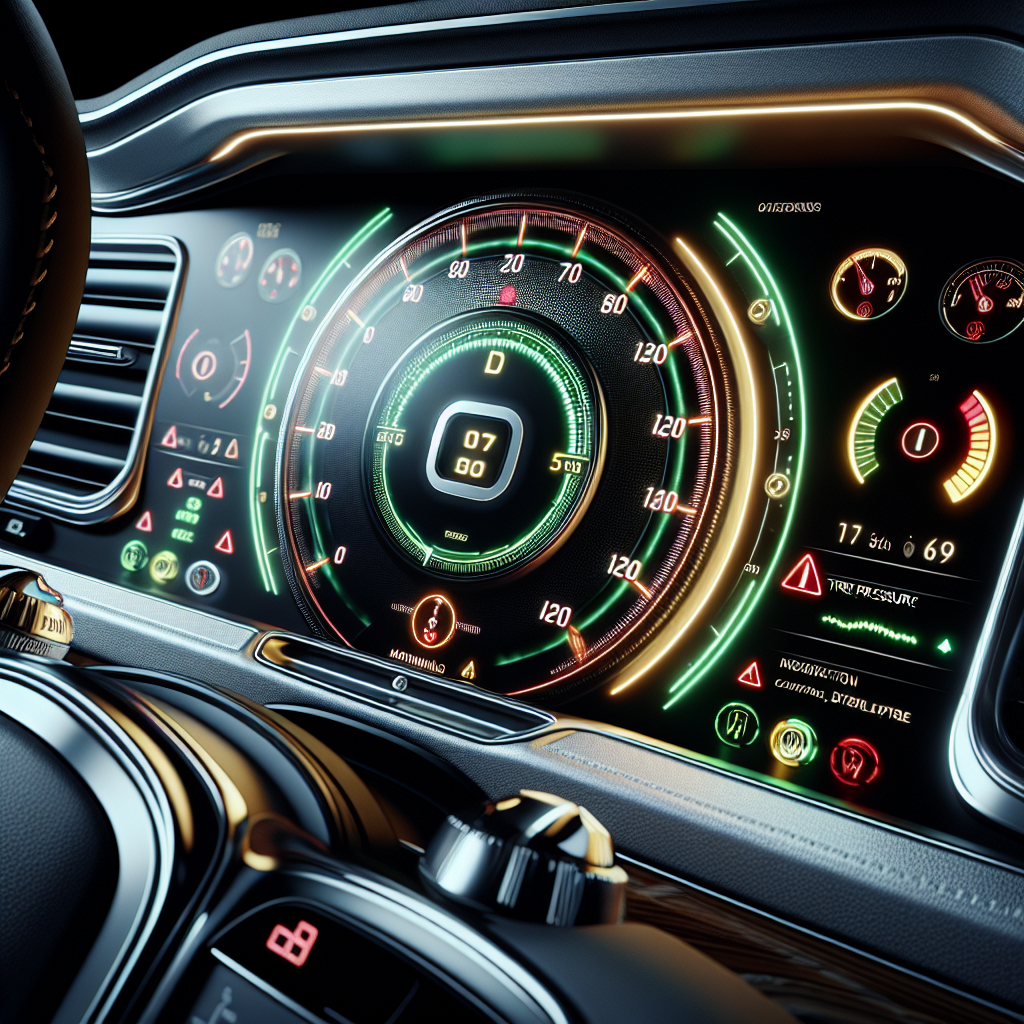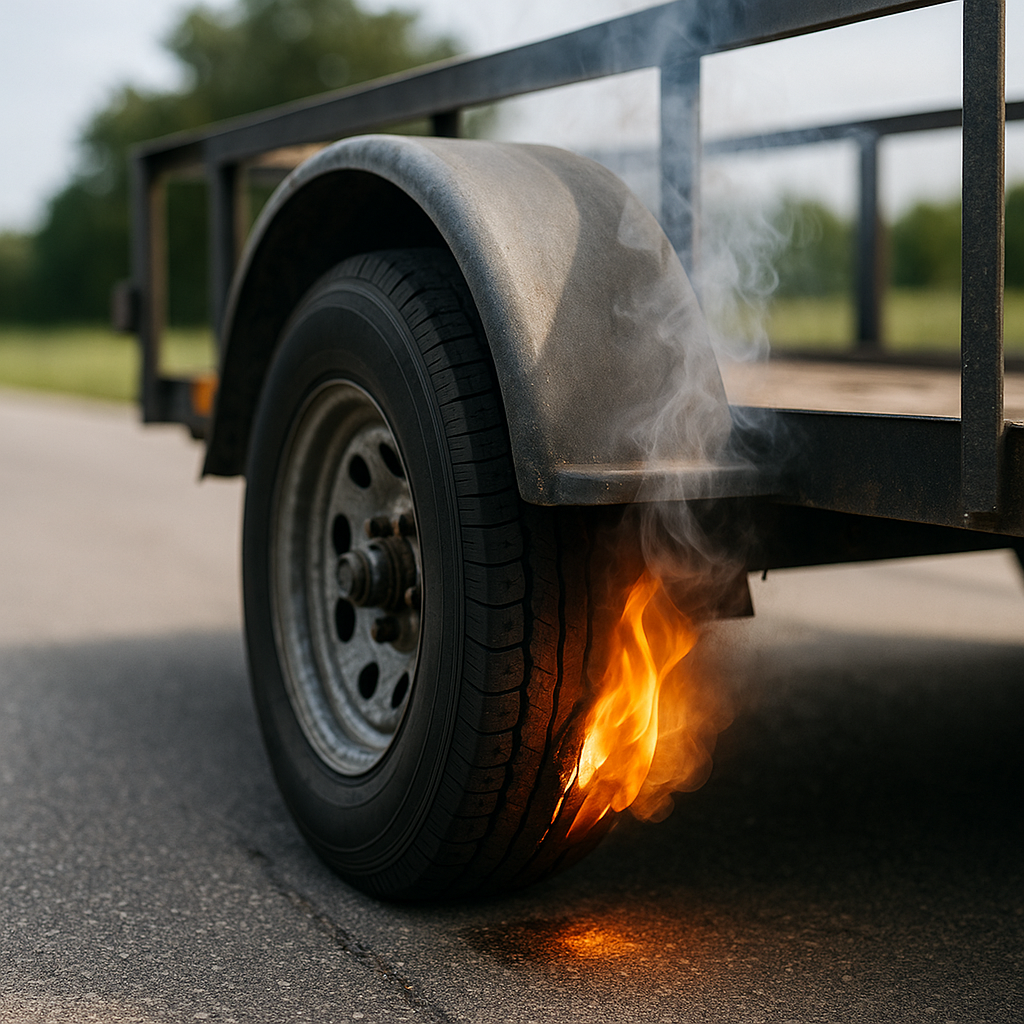Tire Pressure Monitoring Systems (TPMS) are crucial safety features in modern vehicles, designed to ensure optimal tire performance by alerting drivers to low tire pressure conditions. These systems help maintain fuel efficiency, improve handling, and most importantly, enhance overall road safety.
TPMS operates using sensors that monitor the air pressure in each tire. When tire pressure falls below a specific threshold, the system triggers a warning light on the dashboard, prompting the driver to take necessary actions. This proactive approach is essential, as under-inflated tires can lead to increased tire wear, reduced fuel economy, and a higher risk of blowouts.
While TPMS technology has advanced significantly, there are still some common problems with tire pressure monitoring systems that can hinder their effectiveness. Issues such as sensor malfunctions, improper calibration, and battery failures can prevent these systems from accurately relaying information. Understanding these potential pitfalls is vital for drivers who wish to rely on their TPMS for safe driving.
To ensure your TPMS functions optimally, regular maintenance and timely adjustments are recommended. As a trailer owner, you can also enhance your safety net by integrating advanced monitoring systems that provide real-time data on tire pressure and temperature.
Tow with peace of mind, knowing that trailerwatchdog is standing guard.
Common Problems Affecting Tire Pressure Monitoring

Tire Pressure Monitoring Systems (TPMS) are invaluable for maintaining tire safety and performance; however, they are not without their challenges. Understanding the common problems affecting tire pressure monitoring can help drivers take proactive measures to ensure their systems are functioning correctly.
- Sensor Malfunctions: One of the most frequent issues is sensor failure. Sensors can become defective due to exposure to extreme temperatures, physical damage, or corrosion, leading to inaccurate readings.
- Battery Life: TPMS sensors are often battery-operated and can lose power over time. A dead battery will render the sensor useless, preventing it from monitoring tire pressure effectively.
- Improper Calibration: When tires are replaced or rotated, the TPMS must be recalibrated to ensure accurate readings. Failure to do so can result in false alarms or missed alerts.
- Interference: Electronic interference from other devices in the vehicle can disrupt the signal from the sensors, making it difficult for the TPMS to communicate effectively with the vehicle’s onboard computer.
- Temperature Sensitivity: Tire pressure can fluctuate with temperature changes. A sudden drop in temperature can cause tire pressure to decrease, triggering alerts even when the tire was previously at a safe level.
By being aware of these issues, drivers can take steps to mitigate risks associated with TPMS failures. Regular checks and maintenance can ensure that your system operates as intended, keeping you safe on the road.
Impact of Incorrect Tire Pressure Readings
Maintaining the correct tire pressure is crucial for the overall performance and safety of any vehicle. When the impact of incorrect tire pressure readings occurs, it can lead to a variety of significant issues that extend beyond mere inconvenience.
- Decreased Fuel Efficiency: Under-inflated tires increase rolling resistance, requiring more energy and consequently consuming more fuel. Conversely, over-inflated tires can lead to a harder ride and uneven tire wear, both of which can negatively affect fuel economy.
- Reduced Tire Lifespan: Incorrect tire pressure can cause uneven wear patterns on the tires. This can lead to premature tire replacement, resulting in unnecessary expenses and environmental waste.
- Compromised Handling: Tires that are not inflated to the correct pressure can significantly affect vehicle handling and stability. This can lead to increased stopping distances and a higher risk of losing control, particularly in adverse weather conditions.
- Increased Risk of Blowouts: Over-inflated tires are more susceptible to blowouts, especially when driving over rough terrain or at high speeds, which poses a severe safety hazard for drivers and passengers alike.
- Negative Impact on Suspension: Incorrect tire pressure affects not only the tires but also the vehicle’s suspension system. This can lead to increased wear and tear, resulting in costly repairs down the line.
Understanding these impacts emphasizes the importance of regular tire pressure checks, especially in vehicles equipped with TPMS. Proper maintenance ensures that your tires remain safe and efficient, preventing potential hazards on the road.
How to Diagnose Tire Pressure Monitoring Issues

Diagnosing issues with your Tire Pressure Monitoring System (TPMS) can be a daunting task, especially when you are faced with inconsistent readings or warning lights. However, there are several steps you can take to pinpoint the problem effectively.
- Check the Tire Pressure: The first step in diagnosing TPMS issues is to manually check the tire pressure using a reliable gauge. Ensure that the pressure matches the manufacturer's recommended levels, which can usually be found on a sticker inside the driver’s door or in the vehicle’s owner’s manual.
- Inspect the Sensors: Each tire is equipped with a pressure sensor that can malfunction due to corrosion, damage, or battery failure. Visually inspect the sensors for any signs of wear and tear and consider using a TPMS tool to check their functionality.
- Look for Warning Lights: If your TPMS warning light is illuminated on the dashboard, it often indicates an issue. Refer to your vehicle’s manual to understand what the specific signal means, as it may vary by make and model.
- Reset the TPMS: Sometimes, the system may require a reset. This can often be done by following specific procedures outlined in the vehicle’s manual. A reset may resolve issues caused by recent tire changes or pressure adjustments.
- Consult a Professional: If all else fails, it may be wise to consult a professional mechanic or tire specialist. They can perform advanced diagnostics and repair any underlying issues that may not be easily identifiable.
By following these steps, you can effectively diagnose tire pressure monitoring issues and ensure that your TPMS is functioning properly, which is essential for maintaining safety on the road.
Preventive Measures for Tire Pressure Monitoring Systems

Maintaining the health of your Tire Pressure Monitoring System (TPMS) is crucial for ensuring vehicle safety and optimal performance. Implementing preventive measures can significantly reduce the risk of encountering issues. Here are some essential practices to help keep your TPMS in top shape:
- Regularly Inspect Tire Pressure: Make it a habit to check your tire pressure at least once a month and before long trips. Properly inflated tires improve fuel efficiency and extend the lifespan of the tires and the TPMS sensors.
- Monitor Tire Condition: Regularly examine your tires for signs of wear, damage, or punctures. Any physical defects can affect tire pressure and trigger TPMS alerts. Addressing these issues promptly can help avoid sensor malfunctions.
- Keep Sensors Clean: Dirt and debris can accumulate on the tire pressure sensors, leading to inaccurate readings. Ensure that the sensors are clean and free from obstructions during regular tire maintenance.
- Replace Sensors as Needed: Tire pressure sensors have a limited lifespan, typically around 5 to 10 years. During tire rotations or replacements, check the condition of the sensors and replace them if they show signs of age, such as corrosion or battery depletion.
- Understand Your System: Familiarize yourself with the specific requirements and features of your TPMS. Knowing how your system operates can help you troubleshoot issues more effectively and maintain it properly.
By adopting these preventive measures, you can enhance the reliability of your TPMS, ensuring that your vehicle remains safe and efficient on the road.
Conclusion on Tire Pressure Monitoring System Challenges

In summary, understanding the challenges associated with Tire Pressure Monitoring Systems (TPMS) is essential for every vehicle owner. While these systems are designed to enhance safety and performance, several common issues can impact their effectiveness, such as sensor malfunctions, battery life limitations, and environmental factors. Recognizing these challenges allows for better management and maintenance, ultimately leading to improved vehicle safety.
By implementing preventive measures, such as regular inspections and timely sensor replacements, you can mitigate many of these issues. Additionally, staying informed about your TPMS and its specific requirements will empower you to take proactive steps in ensuring its optimal performance.
Ultimately, the goal is to maintain a reliable and efficient TPMS that contributes to your vehicle's overall safety. Tow with peace of mind, knowing that TrailerWatchdog is standing guard. For more information on how to transform your trailer into a smart trailer, visit trailerwatchdog.com.








